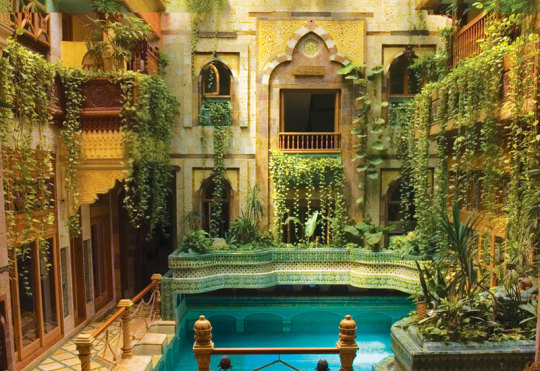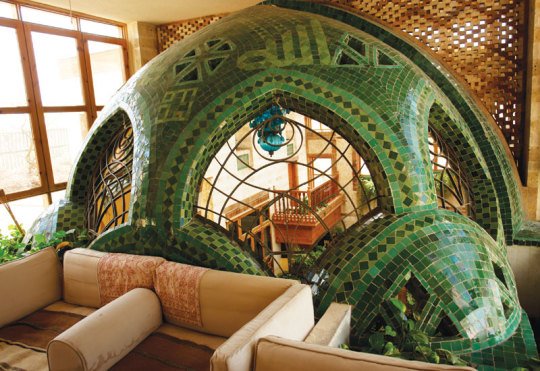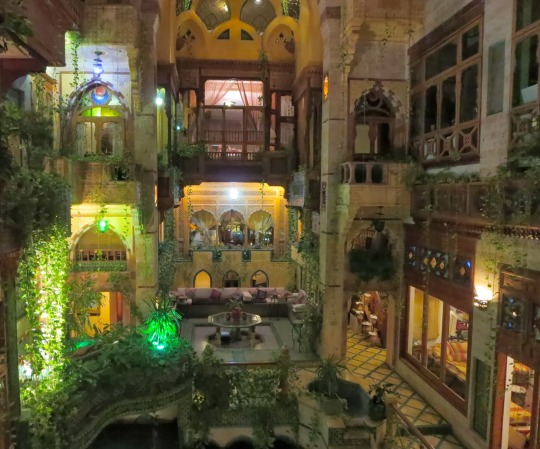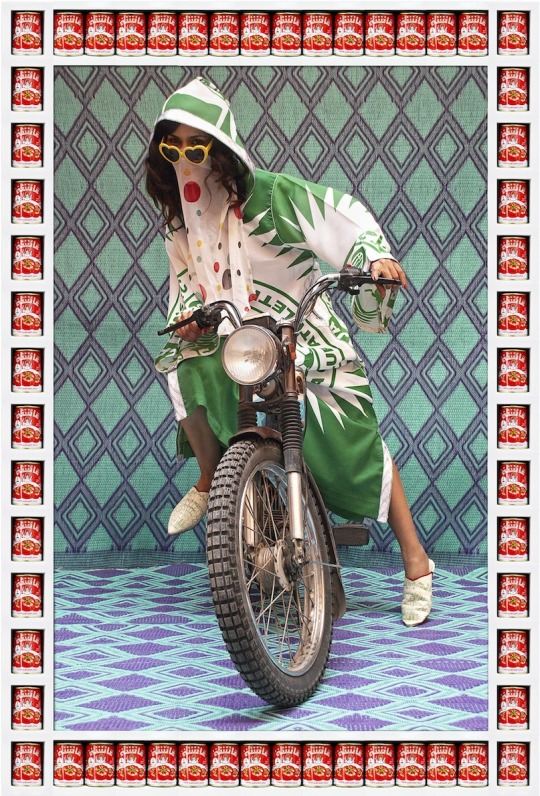RE-ORIENTATIONS examines the notion of "islamic art" by putting its own definition into question—art made by muslim artists, for muslim patrons, or in muslim countries—while challenging the field's limited scope. this blog showcases art that is often rendered invisible by the "islamic art" category, featuring contemporary art from across the islamic world and the muslim diaspora while exploring politics, religion, gender, sexuality, identity and contemporary visual culture. submissions are always welcome, as are questions! or explore the tags by artist or country! also feel free to peruse the FAQ (coming soon!!)
Don't wanna be here? Send us removal request.
Photo
So powerf


‘A revolution without despair nor hope’
Berlin based Egyptian graffiti artist Ammar Abu Bakr eulogizes Egyptian activist Shaima AlSabbagh who was shot and killed at the hands of Egyptian police during a peaceful protest against the current military rule in the country. The photograph below shows Shaima held by her husband seconds after being shot.
4K notes
·
View notes
Photo





212K notes
·
View notes
Photo




art7aké/Nader Dagher (Lebanon)
When Nader Dagher uploaded a picture of Beirut with the words “Home Sick” written in Arabic on it, he was surprised to see that it resonated with many people, friends and strangers. He uploaded a few more creations and they all went viral. It seemed only natural to take it to the next level, and so Art7aké was born.
Not only is Art7ake the product of an unusually creative mind – Art7akeh is a play on word in Arabic with “Art7akeh” or “Arret7akeh” meaning ‘Someone who speaks without saying anything/for its own sake” – but it is also very appealing. So far entirely Facebook and Twitter-based, Dagher handles demands manually. The Facebook page’s current 8,600+ fans seem to actively follow his latest work with many (such as myself) requesting this or that design on canvas or other material.
#art7ake#nader dagher#lebanon#contemporary art#graphic design#digital art#arabic#arabic script#calligraphy
2 notes
·
View notes
Photo




Marium Rana (USA)
The Qalam Series
"This series is called the Qalam Series. Qalam is the Urdu term for the miniature painting brush. This brush is unique, in that it is made from one hair of a squirrel’s tail. Qalam also refers to the first and most important step of the painting process.
I make gouache miniature works that are influenced by both traditional paintings of the Mughal empire, in what is now modern day Pakistan, and contemporary Pakistani street art. As a Pakistani-American, I craved going to Pakistan for the rich visual experience. I was attracted to the art in museums, as much as the folk art that fills the streets. By combining the use of flat patterning, repetition, and vibrant colors with contemporary iconography I honor both traditions."
#usa#pakistan#miniature painting#contemporary art#contemporary islamic art#gouache#painting#marium rana
11 notes
·
View notes
Photo


We just can’t get enough of this series by Moroccan photographer Hassan Hajjaj.
Fascinated by the vibrant dress of female biker crews in Marrakesh, Hassan shot a set of portraits that perfectly captures their unique style.
One of a Kind Portraits of Moroccan Biker Girls
via NPR
8K notes
·
View notes
Photo




Chourouk Hreich (Morocco, France)
4 notes
·
View notes
Photo

installation by Parisian street artist Princess Hijab
8 notes
·
View notes
Text
Basmah Felemban: Let the Walls Speak
By Basmah Felemban, Saudi Arabian Artist
In Saudi Arabia, we were all amazed by the quality and quantity of the graffiti created in Lebanon, and specifically Beirut, when it appeared as the first street art in the Arab world. Then, after the Egyptian revolution started, street artists did not only go to protest on Tahrir Square; they also used Egypt’s walls to document the revolution and convey its message.
Here in Saudi Arabia, things are always different compared to the rest of the Arab world. Expressing our critical opinions has been hard, we have even been censored. To be able to make a difference and raise your voice, you have to think a million times about ways of doing it without getting into trouble.
One of these ways is the visual language, something that has grown amazingly in the region recently. The street art movement has become something big, alongside the development of art galleries and ateliers.
Regardless the quality of the content and execution of the street art, Saudi youth is now expressing feelings and opinions on the city walls. This has always been like a measuring tool, reflecting the level of criticism, frustration or even hope in society.
As Saudis, we grew up seeing random statements all over the walls, such as “A+T= <3” or “Abu Shanab” (Moustache Guy). Or tags from different, mostly online, groups such as X5, WAX or T7. These groups gather to make street art, they participate in competitions, but they also spray their tags everywhere across the city competing on who sprays the most.
When it first came, graffiti was considered as the new and edgy kind of painting used by the young artistic crowd. Yet it was mostly practiced either on paper, to be shared in Facebook groups, or drawn legally during indoors competitions and events. These early graffiti works usually did not criticise or discuss social matters.
VISUAL SUNDAY
But nowadays, with the constant exposure through new media of young people to everything concerning politics and society from all around the world, things are starting to change. So it was only normal that the visual scene too would develop content-wise.
“Mal3ob 3laina” is an online show that talked about poverty in one of Riyadh’s neighbourhoods during one of its episodes, causing the arrest of the crew. They were held in custody for two weekswithout charges, which lead to a big solidarity campaign on different social media networks.
This was taken in the city of Qatif, where there have been protestsrecently. The red message says to the Saudi Crown Prince and Minister of Interior: “Nayef, I dare you to find me”.
This graffiti says Monopoly. It is also a reaction to a short online Saudi movie, which dealt with the housing crisis that many of the youth in the country face.
“For sale due to lack of commitment”: after the Jeddah floods in the end of 2009, this mysterious message appeared on important historical monuments in the city. Police cars covered the whole area and closed the road for about 2 hours because they did not know how to take it down.
One of the first street art pieces to make a buzz in the country was this one in Jeddah, right behind a famous coffee shop. The stencil says “Oil = People”.
Once people noticed the previous graffiti, everyone started sharing a picture of it on Twitter, Instagram and Facebook. Some went to take their own pictures of the art.
Around the same time, not far away, another piece appeared. On a brand new purple garbage container, the message “dirty country” was sprayed. The container was removed and repainted in just a few days.
These images portray the potent and promising street art that has entered contemporary Saudi culture. In order to support and document this movement, the blog Saudi Street Art was created. Anyone can contribute to it through sending their own work or graffiti they spot to the blog administrator.
Finally a video with Dhah, one of the groups of rising graffiti artists. They have been part of the movement’s growth and are considered to be some of the best street artists in the region.
#basmah felemban#let the walls speak#article#street art#graffiti#saudi arabia#contemporary art#words#mashallah news
52 notes
·
View notes
Photo

Al Maw’oud (2011) | Ayman Baalbaki
1K notes
·
View notes
Photo





This will be the Last .. (2010) - Afghan Artist GAZELLE SAMIZAY
Culture, personal and social expectations, religion, family, hope, and pride among many other factors shape the nature of the relationship between a wife and her husband. In this short video, a wife is seen in a constant process of washing a white clean bed sheet with her bare hands. Here is how Gazelle Samizay describes it:
In an effort to escape her marital problems, a woman preoccupies herself with washing a seemingly clean bed sheet. Constrained by cultural stigmas and pride, she will not leave her husband. She prefers to maintain the façade of a perfect life over her own happiness. However, all the past memories of the relationship metaphorically seep out of the sheet. Soon, she feels the burden of keeping silent, and realizes that she is complicit in her own misery. Instead of escaping her problems, she is consumed by them, until they render her powerless.
Watch a short excerpt from the video here.
192 notes
·
View notes
Text
long time no see
hello hello, it's been a while, apologies for the hiatus. updates will be irregular and infrequent because so is my wifi, but I'll do my best to fill your dash whenever I can.
enjoy!
--R
1 note
·
View note
Photo



Lateefa Spiker (UK)
Burgeoning, painting
Red Earth Rising, painting
Turquoise Unfoldia, painting
6 notes
·
View notes
Photo






Disposable Bodies Series (2011-2013) - Palestinian Artist Laila Shawa
In The Other Side of Paradise, I explore the motivations behind the shahida—the Arabic term for “female suicide bomber”—a question that few people would likely choose to consider. The core of the shahida model revolves around a troubling confusion of eroticization and weaponization. In this installation, I sought to assign to each aspirant an identity and wholeness that would otherwise be denied her in the routinely horrific media reports of female suicide bombers in Gaza. - LS
The Other Side of Paradise is the title of the exhibition that hosted the Disposable Bodies Series.
264 notes
·
View notes
Photo

Fashionista/Terrorista - Palestinian Artist Laila Shawa
449 notes
·
View notes
Photo

Ahdiyat Nur Hartarta (Indonesia)
Echo from Purdah #1, #2, #3 (2014): charcoal & mixed media on canvas
(taken at ART|JOG 2014)
6 notes
·
View notes
Text
hello hello! so sorry for the sudden hiatus--I've just moved countries and haven't had a strong enough wifi to do much research lately. the good news, however, is that i've already been to a few art shows here in Indonesia, so you should be seeing some cool examples of art from a region you don't often encounter the very often in islamic art (which is, as you know, why I started this blog in the first place.) stay tuned!
R
0 notes
Photo

Baya (Algeria)
Woman with Two Peacocks and Aquarium
3 notes
·
View notes